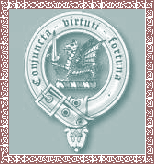


 The Gray
Squirrel Project
The Gray
Squirrel Project
A few years ago I was asked to put together a squirrel study for elementary school students. Here's the project I wrote. We have used it in our family and with co-op groups with fun and success:
Eastern Gray Squirrel Project (may be modified to work with other squirrels, too)
Read:
and A Squirrel's Tale (from Lorraine's beautiful Usborne site) with the younger children, and an article about squirrels from "Natural History" or Anna Comstock's handbook for older kids. Discuss squirrel behavior, especially feeding and nut storage. The squirrels in Potter's books are red squirrels, and are a bit different from the more common (American) gray.
Research Gray squirrels on the internet.
(According to my research, gray squirrels bury acorns or other nuts randomly, and often don't find them, but may find those buried by others. Those they don't find may become trees!)
![]()
The Activity:
Have each child find 10 acorns or other wild hard-shelled nut (beech or hickory). Mark each child's stash with a different color (nail polish works well). Have the children hide the acorns randomly around a large lawn or park. Leave the area for the next activity.
Find some squirrels, if possible, and observe them for a while, quietly. What are their most common behaviors? Are they fighting? Chasing? Eating? Walking? Foraging? For younger children, you might make up a chart of behaviors, with pictures if necessary, and have the kids check off the behaviors they see. Bring the group together to see which behaviors were noticed most often.
Return to the nut-hiding site. Have the kids collect as many nuts as they can--they may collect other children's nuts, so prepare young ones for this. Sometimes a child might get upset if he doesn't find any, or if another child finds his. At the end of a given time period (about the same time it took to hide the nuts), have the kids show how many of theirs they found, and how many of someone else's they found.
![]()
Discussion:
How many did you find in total? Is that more or less than the group had to start? How many did each child find of his own? Of others? Did you find any unmarked? Who is most likely to survive <G>? What happens to the nuts that no one finds?*
Add your own questions, and have fun!
![]()
Other Squirrel ideas:
![]() Feed
the squirrels with their own feeder
Feed
the squirrels with their own feeder
![]() Put
up a large nest box for squirrels in winter and breeding season
click here for free plans!
Put
up a large nest box for squirrels in winter and breeding season
click here for free plans!
![]() Research
other kinds of squirrels
Research
other kinds of squirrels
![]() Find
out why squirrels are sometimes considered "pests" or "invaders"
Find
out why squirrels are sometimes considered "pests" or "invaders"
![]() Visit
a wildlife refuge and talk to the rehab people about rearing young
squirrels
Visit
a wildlife refuge and talk to the rehab people about rearing young
squirrels
![]() Research
squirrel behavior
Research
squirrel behavior
![]() Keep
a squirrel notebook
Keep
a squirrel notebook
![]() Research
squirrel predators (hint: examine owl pellets for squirrel remains)
Research
squirrel predators (hint: examine owl pellets for squirrel remains)
![]() Squirrels
are rodents. Are there any other rodents native to your area?
Squirrels
are rodents. Are there any other rodents native to your area?
![]() Even
though they are called "gray squirrels," some are black. Are there
any black squirrels in your neighborhood? (I have seen them here in
Bellerose NY, Toronto, Amherst MA, and the Bronx...)
Even
though they are called "gray squirrels," some are black. Are there
any black squirrels in your neighborhood? (I have seen them here in
Bellerose NY, Toronto, Amherst MA, and the Bronx...)
*Don't store acorns for a long period of time--acorn grubs are in most acorns...either toss them back into the wild, or, if they are white oak acorns, make acorn pancakes before the grubs grow <yum!> (recipe from Acorn Pancakes, Dandelion Salad and other Wild Recipes by Jean Craighead George). Acorns taste nasty until processed, though!
Copyright 2001 MacBeth Derham